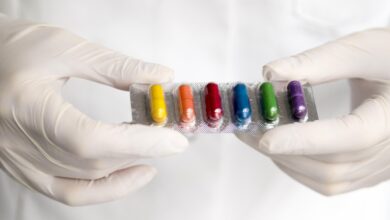Agile Pharma Marketing: Driving Continuous CX Optimization

In today’s rapidly evolving pharmaceutical landscape, customer experience (CX) has become a critical differentiator for success. As healthcare professionals (HCPs) and patients increasingly expect personalized, seamless interactions across multiple touchpoints, pharmaceutical companies must adapt their marketing strategies to meet these demands. Agile pharma marketing teams are emerging as a powerful solution to drive continuous CX optimization, enabling companies to respond swiftly to changing market dynamics and customer needs.
Understanding CX in Healthcare
Customer experience in healthcare refers to the sum of all interactions a patient or HCP has with a pharmaceutical company across various touchpoints, including digital platforms, in-person interactions, and product experiences. A positive CX in healthcare can lead to improved patient outcomes, increased HCP engagement, and ultimately, better business results for pharmaceutical companies[1].
The importance of CX in healthcare cannot be overstated. With the shift towards value-based care and patient-centricity, pharmaceutical companies must prioritize delivering exceptional experiences to both HCPs and patients. This focus on CX can lead to:
1. Enhanced patient adherence to treatment plans
2. Improved HCP loyalty and prescription rates
3. Increased brand reputation and trust
4. Better patient outcomes and quality of life
5. Competitive advantage in a crowded market
The Rise of Agile Pharma Marketing Teams
Agile methodologies, originally developed for software development, have found their way into pharmaceutical marketing, offering a flexible and iterative approach to strategy and execution built on customer insights and data-driven execution. Agile pharma marketing teams are cross-functional, self-organized groups that work in short, iterative cycles to deliver value quickly and adapt to changing customer needs[1][2].
Key characteristics of agile pharma marketing teams include:
1. Cross-functional collaboration
2. Rapid iteration and experimentation
3. Customer-centric focus
4. Data-driven decision-making
5. Continuous learning and improvement
Driving Continuous CX Optimization
Agile pharma marketing teams are uniquely positioned to drive continuous CX optimization through several key practices:
1. Rapid Prototyping and Testing
Agile teams can quickly develop and test new CX initiatives, allowing for faster learning and iteration. This approach enables pharmaceutical companies to:
– Launch minimum viable products (MVPs) to gather early customer feedback
– Conduct A/B testing on digital platforms to optimize user experiences
– Rapidly iterate on marketing messages and content based on real-time data
2. Cross-Functional Collaboration
By breaking down silos between departments, agile teams can create more holistic and integrated CX strategies. This collaboration leads to:
– Seamless omnichannel experiences for HCPs and patients
– Consistent messaging across all touchpoints
– Improved alignment between marketing, medical affairs, and sales teams
3. Data-Driven Decision Making
Agile teams leverage data analytics to inform their CX optimization efforts. This includes:
– Analyzing customer journey maps to identify pain points and opportunities
– Using predictive analytics to anticipate customer needs and preferences
– Implementing real-time dashboards for monitoring CX metrics and KPIs
4. Continuous Feedback Loops
Agile teams establish regular feedback mechanisms to gather insights from customers and internal stakeholders. This practice enables:
– Rapid identification and resolution of CX issues
– Ongoing refinement of customer personas and journey maps
– Continuous improvement of marketing strategies and tactics
Recent CX Trends in Pharma
To effectively optimize CX, agile pharma marketing teams must stay abreast of the latest trends shaping customer expectations. Some key trends include:
1. Personalization at Scale: HCPs and patients expect tailored experiences that address their specific needs and preferences. Agile teams can leverage AI, data and machine learning to deliver personalized content, recommendations, and interactions across channels[3].
2. Digital-First Engagement: The COVID-19 pandemic dramatically accelerated the shift towards digital engagement in healthcare. Agile teams must focus on creating seamless digital experiences, including virtual events, e-detailing, and telemedicine support[1].
3. Patient Empowerment: Patients are taking a more active role in their healthcare decisions. Agile teams should develop strategies to support patient education, self-management tools, and shared decision-making resources.
4. Real-World Evidence: There is a growing emphasis on demonstrating real-world outcomes. Agile teams can collaborate with medical affairs to integrate real-world evidence into their CX strategies, providing valuable insights to HCPs and payers.
5. Voice and Conversational AI: The rise of voice-activated devices and AI chatbots presents new opportunities for pharma companies to engage with customers. Agile teams can explore these technologies to enhance customer service and provide on-demand information.
Martech Considerations for Agile Pharma Marketing
To support continuous CX optimization, agile pharma marketing teams need a robust martech stack. Key considerations include:
1. Customer Data Platforms (CDPs): CDPs enable the integration of data from multiple sources, providing a unified view of the customer. This is crucial for delivering personalized experiences across channels[5].
2. Omnichannel Orchestration Tools: These platforms allow agile teams to coordinate messaging and experiences across various touchpoints, ensuring consistency and relevance.
3. AI-Powered Analytics: Advanced analytics tools can help agile teams uncover deep insights from customer data, enabling more precise targeting and personalization.
4. Content Management Systems (CMS): A flexible CMS is essential for agile teams to rapidly create, iterate, and distribute content across channels.
5. Marketing Automation Platforms: These tools enable agile teams to automate repetitive tasks, freeing up time for strategic initiatives and creative problem-solving.
6. Customer Feedback and Survey Tools: Implementing robust feedback mechanisms is crucial for gathering continuous insights to inform CX optimization efforts.
Staffing Considerations for Agile Pharma Marketing Teams
Building effective agile pharma marketing teams requires careful consideration of roles and skill sets. Key positions to consider include:
1. Agile Coach/Scrum Master: This role helps guide the team in implementing agile methodologies and facilitates continuous improvement.
2. Customer Experience Strategist: Responsible for developing and refining the overall CX strategy, ensuring alignment with business objectives.
3. Data Scientist/Analyst: Provides deep insights from customer data to inform decision-making and personalization efforts.
4. Content Strategist: Develops and oversees the content strategy, ensuring relevance and consistency across channels.
5. UX/UI Designer: Focuses on creating intuitive and engaging digital experiences for HCPs and patients.
6. Marketing Technologist: Manages the martech stack and ensures seamless integration of various tools and platforms.
7. Regulatory/Compliance Specialist: Ensures all marketing initiatives comply with industry regulations and company policies.
8. Cross-Functional Liaisons: Team members who can effectively collaborate with other departments (e.g., medical affairs, sales, R&D) to ensure alignment and integration of CX initiatives.
Overcoming Challenges in Implementing Agile Pharma Marketing
While the benefits of agile pharma marketing are clear, implementation can face several challenges:
1. Regulatory Constraints: The highly regulated nature of the pharmaceutical industry can sometimes conflict with the rapid iteration approach of agile methodologies. Agile teams must find ways to balance compliance requirements with the need for speed and flexibility[2].
2. Cultural Resistance: Traditional pharmaceutical companies may resist the shift to agile ways of working. Leadership support and change management initiatives are crucial for successful adoption.
3. Data Silos: Many pharma companies struggle with fragmented data across different systems. Agile teams must work to break down these silos to create a unified view of the customer. Working closely with data vendors can help build even more robust and real-time insights.
4. Skill Gaps: The transition to agile marketing may reveal skill gaps within existing teams. Ongoing training and development programs are essential to build the necessary capabilities.
5. Measuring Success: Defining and tracking meaningful CX metrics can be challenging in the complex healthcare ecosystem. Agile teams must work to establish clear KPIs that align with both customer needs and business objectives.
Conclusion
Agile pharma marketing teams offer a powerful approach to driving continuous CX optimization in the rapidly evolving healthcare landscape. By embracing cross-functional collaboration, rapid iteration, and data-driven decision-making, these teams can create more personalized, engaging experiences for HCPs and patients alike.
As pharmaceutical companies navigate the challenges of digital transformation and changing customer expectations, investing in agile marketing capabilities will be crucial for success. By staying attuned to emerging CX trends, leveraging advanced martech solutions, investing in quality data sources and building diverse, skilled teams, pharma marketers can position themselves at the forefront of customer-centric innovation in healthcare.
The journey towards agile pharma marketing and continuous CX optimization is not without its challenges. However, the potential rewards – improved patient outcomes, increased HCP engagement, and stronger business performance – make it a worthwhile endeavor for forward-thinking pharmaceutical companies.
Citations:
[1] https://www.pharmexec.com/view/5-lessons-learned-from-embracing-agile-in-commercial-launch





